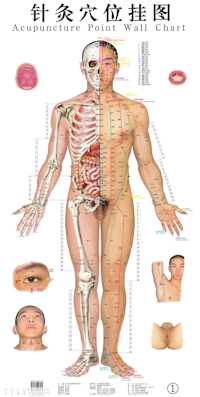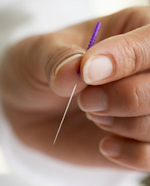q & a
the acupuncture treatment
 Diagnosis: An
acupuncturist’s diagnosis is determined in part
using methods similar to other health care
practitioners: asking patients for a thorough
history of their health, diet, exercise patterns and
chief complaints.
Diagnosis: An
acupuncturist’s diagnosis is determined in part
using methods similar to other health care
practitioners: asking patients for a thorough
history of their health, diet, exercise patterns and
chief complaints.
However, the acupuncturist also uses unique diagnostic techniques, such as taking the patient’s pulse on both wrists and observing the tongue, complexion and other signs. The three pulses felt on each wrist are thought to correspond to certain organs and functions.
Treatment Procedures: Modern acupuncture needles are stainless steel, between one-half and three inches long, ultra-fine and quite flexible. They are pre-sterilized, nontoxic and disposable (single use). When the needles are tapped into the skin, there may not be any sensation. Much depends on the location (hands and feet tend to be more sensitive), the condition being treated and the acupuncturist’s technique. Needles are typically placed in several acu-points and are usually left in about 20-40 minutes. The goal is to normalize the circulation of Qi and blood by stimulating the energy point, which encourages the body’s natural healing process.
The number of treatments depends upon the duration, severity and nature of your health condition.
 Additional Techniques used may include:
moxibustion (burning herbs to heat acupoints), cupping
(suction), auricular therapy (ear acupuncture), tui na (Chinese
Massage) and acupressure.
Additional Techniques used may include:
moxibustion (burning herbs to heat acupoints), cupping
(suction), auricular therapy (ear acupuncture), tui na (Chinese
Massage) and acupressure.
Treatment Precautions: It is not recommended to have an acupuncture treatment if you are very hungry or extremely tired. Some bruising may occasionally occur after needling. If you have a bleeding disorder or are on blood-thinning medications, you should inform your acupuncturist before undergoing treatment. If you are pregnant or have a pacemaker, tell the acupuncturist so that appropriate herbs and acu-points will be chosen.
Call us today for an appointment - 916-984-6608
